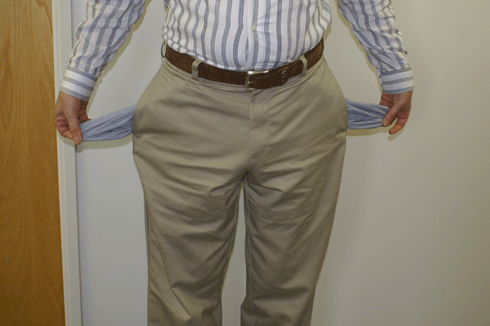How to File Bankruptcy

Get rid of your debt faster with debt relief
Choose your debt amount
Or speak to a debt consultant 844-731-0836
- 3 min read
- Consumers have two main choices in bankruptcy.
- Consult with a lawyer experienced in bankruptcy.
- Collection activities are put on hold during bankruptcy.
- Start your FREE debt assessment
How to File Bankruptcy and What to Know
Filing bankruptcy is a well-documented process that can be accomplished by a non-lawyer with the aid of good bankruptcy how-to book. However, the success rate of pro se (Latin for, essentially, "do it yourself") bankruptcies is low. By contrast, the success rate of lawyer-assisted bankruptcy filings is almost 100%. This Web page provides a brief outline of the bankruptcy process and the types of bankruptcy available to consumers.
There are many types of bankruptcy, called "chapters" but two types apply to most consumers:
- Chapter 7 — Liquidates all non-exempt property to pay off creditors
- Chapter 13 — Requests the opportunity to repay some or all debts in better terms (i.e., the debtor has an income but just cannot keep up with the payments)
There are other types of bankruptcy but regarding personal bankruptcy that does not involve a farm, Chapter 7 and Chapter 13 are your options.
How to File for Bankruptcy
Determine a Chapter to File: If you have decided your only option is to file for bankruptcy, you need to first figure out which type you are going to file. Bankruptcy is a legal proceeding that must be filed in bankruptcy court, so it is a good idea to consult a lawyer for advice on which chapter to file.
Typically if you have no way to pay any amount of your debt, Chapter 7 is your best bet. If you have some income and just cannot seem to meet the payments, Chapter 13 is a better option. Ultimately, if you want your bankruptcy to go as smoothly as possible, you need to get a bankruptcy lawyer.
Find and Hire a Bankruptcy Lawyer: Again, bankruptcy is a legal process and involves extensive paperwork, filing, and other proceedings. Trying to file bankruptcy on your own is possible, but one slip up can delay your bankruptcy and cause further problems. See the Bills.com resource Find a Lawyer to learn the eight questions you should ask a lawyer before signing a fee agreement.
Note: Before you can file, you need to enroll in and complete an educational course through an approved counseling agency. This is a mandate for those filing bankruptcy that is required by a 2005 change to the bankruptcy code. Your lawyer will help you find an approved course.
After you complete your course, your lawyer will ask you for all personal information necessary to file bankruptcy, so be ready to give your lawyer all the information he/she needs. Once your bankruptcy has been filed, you will be assigned a trustee. This trustee is responsible for your case and acquiring all the necessary documentation and details. In the meantime, you need to notify your creditors that you filed for bankruptcy. This will place an immediate halt on all legal actions they may be taking to obtain the amount you owe them from the day your bankruptcy is filed. In legal terms, this halt is called a stay.
Meet with Your Creditors: Part of the bankruptcy process is for you and your lawyer to meet with your creditors and their lawyers. This meeting is typically 30 days after your first file and held by your trustee. During this meeting you will be sworn in under oath and all discussions during the meeting will be recorded. The purpose of the meeting is to discuss the bankruptcy papers filed on your behalf. This meeting is short and creditors are not necessarily required to appear.
After this meeting, your assets are liquidated and your creditors divvy-up whatever is not exempt.
Length of Your Bankruptcy
The length of your bankruptcy depends on the specific chapter you file:
- Chapter 7 — Takes 90 days to complete, customarily
- Chapter 13 — About 3 to 5 years
Chapter 13 takes longer because the debtor negotiates new terms rather than halting all debt and liquidating everything immediately. However, during Chapter 7, the stay prevents creditors from foreclosing on your home, repossessing your car, garnishing your wages/accounts, or taking other collection activities.

Get rid of your debt faster with debt relief
Take the first step towards a debt-free life with personalized debt reduction strategies.
Choose your debt amount
Or speak to a debt consultant 844-731-0836